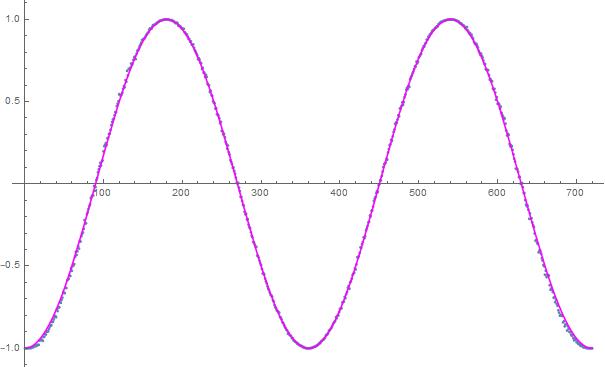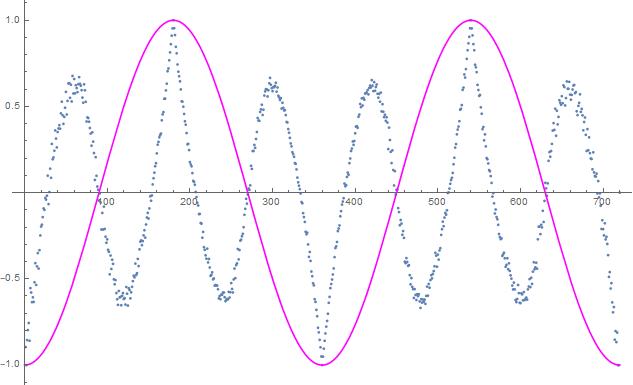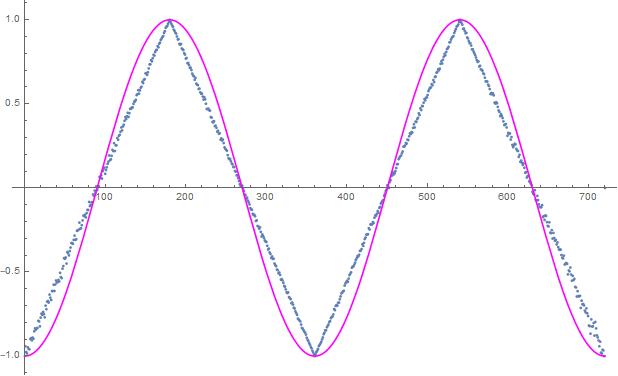FrediFizzx wrote:Not even close.
What are your A and B functions per Bell?
They can't be close - that's Bell's theorem for you!
Thanks for your comments. I'm revising the accompanying paper at the moment, and you are giving me good ideas for more things which I should add to it.
The point is that some of the curves do exceed the negative cosine in some places where both are positive. They don't lie "inside" the area enclosed by the zig-zag / saw-tooth / triangle-wave, though many people seem to think that that is what Bell's theorem says. The hidden variable is an angle.
The A and B functions: the little disks in the pictures tell you in each case what A and B are, it's the famous coloured spinning disk model, with just two colours. The A and B curves are piecewise constant. In order to make sure that there is perfect (anti) correlation at various setting differences, one is the negative of the other. Remember that Caroline Thompson had a spinning ball model with three colours, one of the colours being for "no detection". With three colours, one of the colours being "no detection", one can recover the negative cosine perfectly, as Pearle essentially showed long ago. And as Michel Fodje discovered for himself, independently. No doubt there have been others, too. Hans de Raedt (University of Groningen, Netherlands) has been publishing simulations of that nature for a long time.
Could you post your Mathematica code as a plain text file? Copy-pasting from the pdf doesn't work well. The notebook file is a text document but it contains much, much more than the Mathematica code itself. Which is hard to extract from the notebook. I'll then do a quick translation into R. It will certainly help me understand what you're doing




